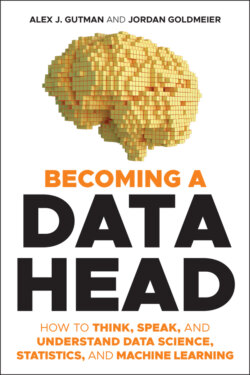Читать книгу Becoming a Data Head - Alex J. Gutman - Страница 18
The Subprime Mortgage Crises
ОглавлениеWe were fresh out of college when the subprime mortgage crisis hit. We both landed jobs in 2009 for the Air Force, at a time when jobs were hard to find. We were both lucky. We had an in-demand skill: working with data. We had our hands in data every single day, working to operationalize research from Air Force analysts and scientists into products the government could use. Our hiring would be a harbinger of the focus the country would soon place on the types of roles we filled. As two data workers, we looked on the mortgage crisis with interest and curiosity.
The subprime mortgage crises had a lot of contributing factors behind it.2 In our attempt to offer it up as an example here, we don't want to negate other factors. However, put simply, we see it as a major data failure. Banks and investors created models to understand the value of mortgage-backed collateralized debt obligations (CDOs). You might remember those as the investment vehicles behind the United States’ market collapse.
Mortgage-backed CDOs were thought to be a safe investment because they spread the risk associated with loan default across multiple investment units. The idea was that in a portfolio of mortgages, if only a few went into default, this would not materially affect the underlying value of the entire portfolio.
And yet, upon reflection we know that some fundamental underlying assumptions were wrong. Chief among them were that default outcomes were independent events. If Person A defaults on a loan, it wouldn't impact Person B's risk of default. We would all soon learn defaults functioned more like dominoes where a previous default could predict further defaults. When one mortgage defaulted, the property values surrounding the home dropped, and the risk of defaults on those homes increased. The default effectively dragged the neighboring houses down into a sinkhole.
Assuming independence when events are in fact connected is a common error in statistics.
But let's go further into this story. Investment banks created models that overvalued these investments. A model, which we'll talk about later in the book, is a deliberate oversimplification of reality. It uses assumptions about the real world in an attempt to understand and make predictions about certain phenomena.
And who were these people who created and understood these models? They were the people who would lay the groundwork for what today we call the data scientist. Our kind of people. Statisticians, economists, physicists—folks who did machine learning, artificial intelligence, and statistics. They worked with data. And they were smart. Super smart.
And yet, something went wrong. Did they not ask the correct questions of their work? Were disclosures of risk lost in a game of telephone from the analysts to the decision makers, with uncertainty being stripped away piece by piece, giving an illusion of a perfectly predictable housing market? Did the people involved flat out lie about results?
More personal to us, how could we avoid similar mistakes in our own work?
We had many questions and could only speculate the answers, but one thing was clear—this was a large-scale data disaster at work. And it wouldn't be the last.
